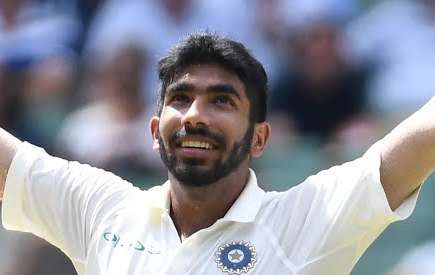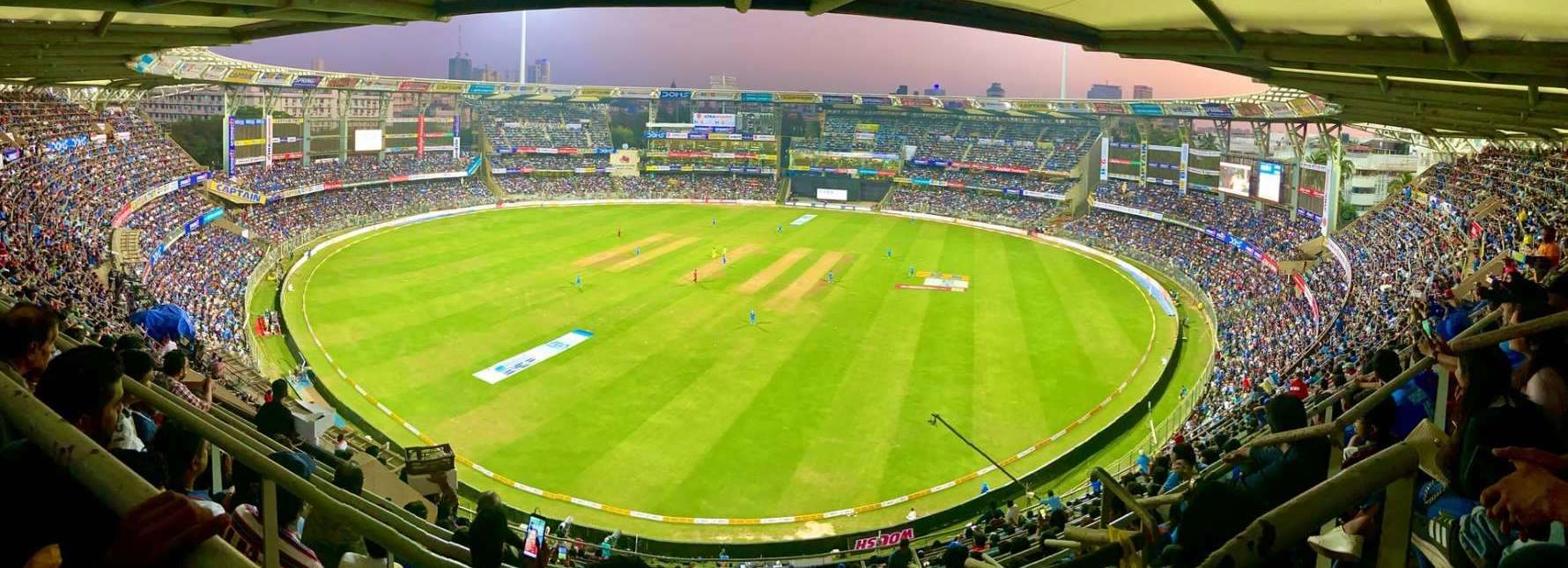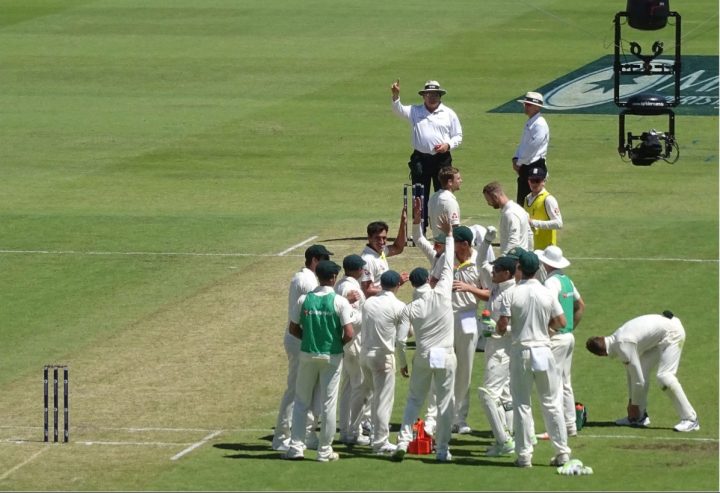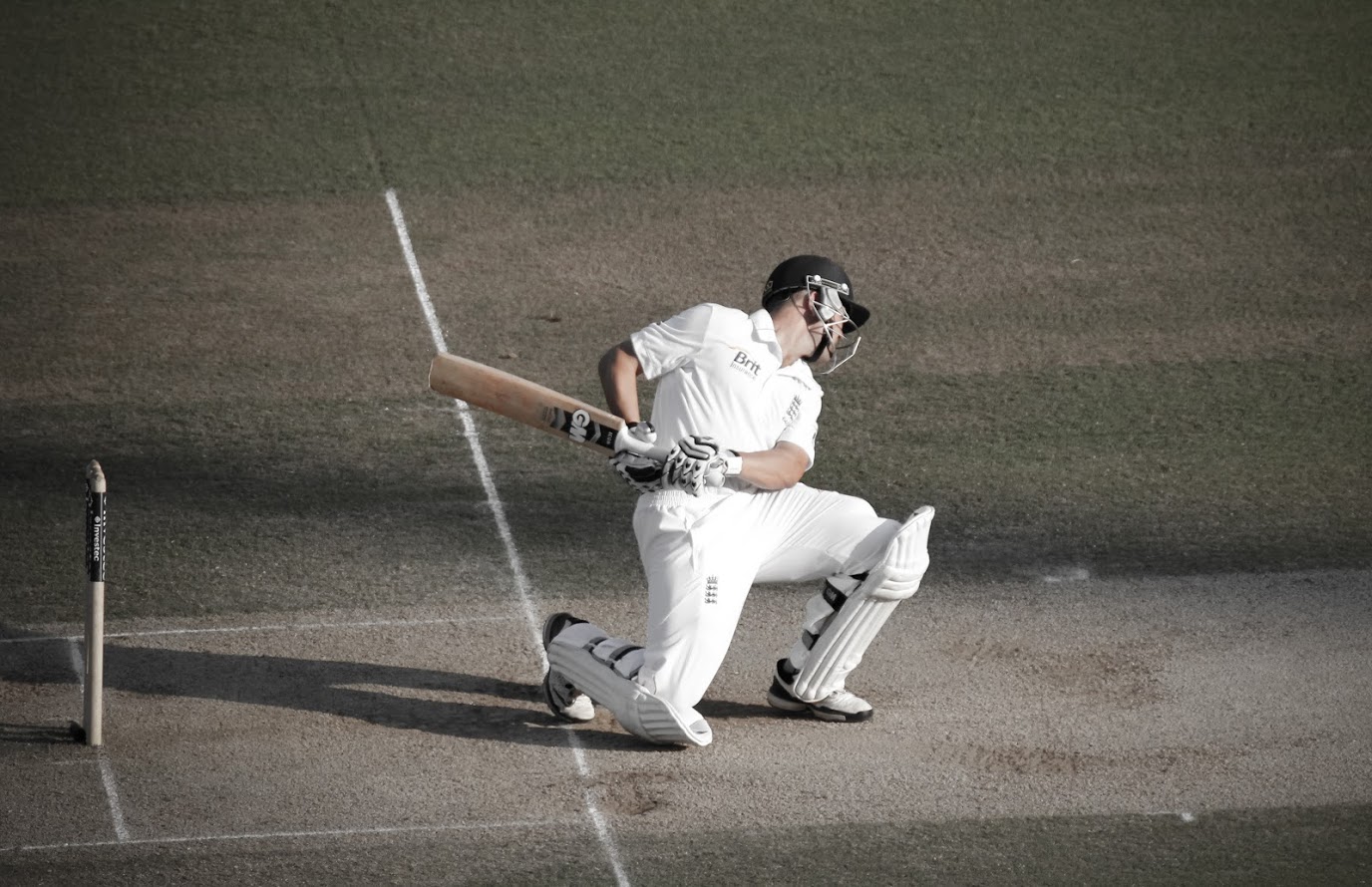Today Abhijato looks at the recent Test series from an Indian perspective. Where are the BCCI succeeding whilst the ECB are failing? And what roles are money and the IPL playing in India’s new found strength in depth?
Washington Sundar’s first name is the closest we’ve come to involving the US in world cricket. Yet, its most famous ideal—capitalism—permeates every institution in our sport today. And no, this isn’t going to be a critique of the vices of those who rely on materialism to define their worth. All of us are guilty of it in more ways than we’d care to confess.
But when we switch our channels and read the news, we see its influence everywhere, don’t we? Quite literally, in the case of English cricket. This series was the first one to be fully broadcast on an FTA channel in ages, after all.
The ECB didn’t take broadcasting rights off the terrestrial network after 2005 because they misunderstood how to unlock the game’s greater good. They did it because they wanted the money—and they’ve invested it for undeniable results in the white-ball game, even though it’s debatable if that’s where the money should have been spent.
The Indian Premier League has proliferated the rise of T20 leagues around the world. It’s the merchant of death for Test cricket, according to some. Why, the English players were ‘rested’ and ‘rotated’ throughout this series for two clear reasons. Firstly, they wanted their full-strength teams for the upcoming letter of intent matches in a World Cup year. And secondly, it’s because they’re worried that some players might ultimately turn down an ECB central contract in favour of an IPL contract instead.
You simply cannot blame the players for going where the money is. I’m an Indian myself, and the recent socio-economic scenario of my own country means I’ve become an inadvertent expert on the vices of hypernationalism, if not capitalism too. The players are justified in making the most out of their playing years financially—even if it means turning their backs on what the elitists back home might think is the most important duty of a cricketer’s life.
***
Washington Sundar is a direct result of the IPL. If not for the tournament, he wouldn’t have been on that flight to Australia a couple of months back. He wouldn’t be in the COVID-enforced queue when injuries called for him in the absence of anyone else. And he certainly wouldn’t be at the Motera, playing for an impeccable 96* while the opposition struggled to tally their total to just his score.
He hadn’t even played a first-class game for almost three years before his India debut. Yet, he’s learned the craft of control from the international players he’s shared the dressing room with at the IPL. It shows in the way he carries himself – unlike, say, Dom Bess, who too is a young man and undercooked, but not at peace with the world or with the management because of a system which has neglected spinners for too long.
While playing those clean shots through the line and down the ground like a top-order batsman, Sundar also displayed a temperament that has become the defining feature of the Indian team in recent times. The same set of players would have crumbled in foreign conditions some time ago. But their recent streak of victories indicates their elevens have been infiltrated by not only exuberant but also competent youth.
Sundar showed it in the way he batted with unearned self-confidence. Meanwhile, Axar Patel got into the heads of the English batters with his arm ball, a useful delivery but not one which the opposition should succumb to every time. The former averages above 50 in his career so far, while the latter averages just a shade over 10 with the ball. It’s worth mentioning that Axar also rose to prominence at the IPL, and has been on the selection radar because of his economic returns for years on end.
And then there’s Rishabh Pant – the favourite child of both home grounds and away grounds whenever he dons his Delhi Capitals shirt. And you can see why when he plays reverse flicks like he did off Anderson during his century in the fourth Test.

There’s been so much said about Pant already. But no fact reflects his coming-of-age better than his average of 67 in his past two series—both of which have been tough to bat in. He’s taken the game away from the opposition too often for these innings to be considered anomalous projections of unfulfilled talent any longer.
Jasprit Bumrah is a find of the IPL too. He got called up to the national side and was extended all the resources he needed to develop his game because of his uncanny action’s effectiveness during his initial returns under the tutelage of world-class mentors with the Mumbai Indians. Although it must be said that Bumrah himself credits the irreplaceable experience he’s had in the Ranji Trophy …
***
India has resources that it’s fully realising only today. In a way, you could say that it masks the corruption and power-games within its institutions. And you would be correct—Wasim Jaffer’s resignation from being Uttarakhand’s state coach has been filled with religious rhetoric which has become too commonplace in the country today. But almost no one speaks up about these things because of the sway which politicians have over them.
The politically influential have always been a prominent part of running the cricketing institutions of India. The BCCI secretary, Jai Shah, is the son of the country’s Home Minister. He’s not the aberration but the norm—and people like him are the ones who influenced the recent social media fiasco where the national team’s cricketers coordinated a clear propaganda campaign for their ‘overlords’.
The IPL is by no means the answer to all of world cricket’s problems, of course. In fact, it might be exacerbating the issues within the domestic structure of the game. But its benefits are undeniable too.
The BCCI does do more things right than it’s given credit for during these times. Jasprit Bumrah is right when he talks about the Ranji Trophy being the primary reason for his success with the red ball. The IPL isn’t the primary reason for India’s success in Test cricket. It’s the Ranji Trophy and the National Cricket Academy’s inputs that makes the Indian red-ball players better than they’ve ever been before.
The first-class competition has world-class quality, much more so than its English counterpart. While the County Championship has been pushed to the status of a grandpa no one wants to look after, the BCCI cares for its own structures enough to know how they’ll deliver the best results.
The Jaffers are not going away anytime soon, but then, neither are those like Siraj—the ones who defy socio-economic odds to rise above communal identity and become national icons in the process. The latter is the product of a thriving ‘A’ team system headed by Rahul Dravid, who has been widely credit as the main reason for India’s sudden increase in bench strength. As always, he’s undersold his importance. But Indian cricket can rest easy knowing enough people like him are at its helm now.
***
There is no denying the relevance of money in today’s world. The Hundred is an attempt at making money, not at producing better cricketers. But the ECB has enough resources to direct its funds towards places where English cricket can be diversified and improved.
We don’t live in a utopian world by any means. But we don’t have to live in an incompetent one either. The ECB needs to make more varied pitches at the domestic level, adjust the domestic calendar to accommodate County Cricket into their scheme of things and oh, for the dear love of god, please chuck away the Hundred. They need to do it for themselves and the game they’re supposed to care about, not for us.
This tour of India doesn’t have to be an embarrassment which never happened. It can very well be an embarrassment which English cricket learns from. The opposition has taught you how to live a technicolour life in a monochrome world—you could do worse things than learning from them.
Abhijato Sensarma









Abhijato Sensarma touches on it but the rigour of coming through the development pathway under Dravid is the key to the success of the new talents we are now enjoying. I read an article recently focusing on Rahane outlining how, in age-group developmental cricket in India, T20 is not played and little white ball cricket until the later stages – Under-19, I think it said. That way by the time these player get into any international and/or IPL teams they have honed their technical skills and are properly equipped to play any form of cricket.
In the UK we bring up youngsters on a surfeit of T20 and white ball cricket, leaving the counties, who are the only real source of learning for red ball cricket with little help in technical skill development. At test level, we are now reaping the reward from that in England just as the Indians are reaping what they have successfully sowed.
1) Playing at home.
2) Being willing to go even further in pitch preparation.
That’s about it. Come back to me when India win in England if you want to argue there was any more to it.
Sorry pressed report first instead of reply. It’s lockdown fatigue!
I think India might have a few surprises in store for us. Looks to me that they have 3 very good pace men who may prosper on our “prepared” pitches. Works both ways sometimes.
When India win the Test Championship in England or when they defeat England in England? Both may happen this year itself, after all xD
I wrote earlier in the previous thread that most countries seem to manage all formats better than us because they are not brought up mainly on a white ball diet. I’m more enlightened after reading this piece, so thanks for that.
Being a young Indian myself, I can tell you that the newest generation of fans have always been neglectful of Test cricket despite Kohli & Co.’s best efforts at promoting the game! The triumph in Australia has caused a potential shift in the status quo. It’s too bad that there isn’t all that much Test cricket coming up in the next few months.
As for the players themselves, having learnt cricket at a junior level myself, I can guarantee you that most places are very orthodox when it comes to teaching cricket. We have a tendency to take our passions very seriously, even if the children learning the game don’t necessarily take it seriously themselves!
I remember wanting to hit balls out of the park when I first went to the local club to learn cricket. What I was taught instead was how to shadow bat properly and made to defend every ball which came my way – bouncer or yorker – for hours on end. I remain a terrible batsman by the way of ineptitude, but those more gifted were much more solid in their technique. When it’s inculcated at a young age, good technique carries forward for those who eventually make it to the Test level.
Actually, binning the Hundred would largely solve the scheduling issues by itself, since the RLC could be moved to April and the Championship wouldn’t start till the start of May. Then the only thing to do would be not to play the Blast in one block–which would automatically free up around half of the summer months for red-ball cricket.
What you have to remember about cricket in India is that it is their national sport, permeating everyday life to a greater degree than footie does here. This means in sporting terms cricket is the prime example of national identity home and abroad, so no money is spared to promote its global identity. India have a willing government and many more domestic monied businessmen wanting to get involved in this excercise than we do, witness the trouble English businessmen have competing with their foreign counterparts for ownership of premiership clubs, where Eastern European oligarchs and Saudi princes seem to have cornered the market. Also government funding for sport here is a joke, with the lottery having more of an impact generally.
The above means cricket is high priority and along with a massive population available to tap into it’s no wonder Indian cricketing fortunes are on the up. Cricketing scholarships have been commonplace for some time over there with the banking community in particular offering potential star players a career route to financial security. I seem to recall Habid Bank employing a young Gavaskar whilst he spent most of his time swanning round the world playing cricket. This was long before the advent of the IPL.
I should point out this is not sour grapes but a mere commentary on the state of the game over there compared to here. I would much rather be a young Indian cricketer than a young English one at the moment. Cricket in this country has been a poor relation for decades, reflecting as it always has done the mores of contemporary society, which is why white ball cricket has a greater innate pull than red.
Very interesting article thank you Abhijato. Partiular the comments on the Ranji trophy and how much you give credit to that tournament. What is it about the Ranji Trophy that is helping the Indian structure so much? I understand it is watched by poor crowds but from what you say it is a tournament still taken seriously by the players.
It is. The crowds have been unhealthy for a long time now, but the quality is more than redeemable. Also, the selectors have made a point of emphasising on domestic cricket to be the way for stepping up to A-team and national honours, not via the IPL, even for T20 cricket. That’s why all the players in the Test side seem to be veterans from the moment they step into the Indian side nowadays – they’ve been built up for the game like that. And the Ranji Trophy adequately does that.
This may be ironical, but the England selectors perhaps place more emphasis on IPL form while selecting their teams rather than their Indian counterparts! The Syed Mushtaq Ali trophy does that for the selection into the A team. As mentioned in the article, the NCA has ensured the youth enters the Ranji Trophy readily too, which means competition is fierce from the get-go.
The County system need to look at how other national championships are played around the world and what effect it has on the national teams. The two standouts are the Ranji Trophy and Sheffield Shield in Australia – both India and Australia produce great Tests fairly consistently. One competition has a huge population base to work with, the other a third of what England has to work with. The ECB has plenty of material to work with just from those successful competitions.
I can’t comment on Indian wickets around the country, fair to say they all, or most, are designed for turn. In Australia, we all know you get a variety of wickets to suit everyone: Brisbane – hard, fast, bounce and humid. A fast bowlers delight, but rewards batsmen who knuckle down and be patient. Perth (WACA not the new stadium) – similar to Brisbane but has the Fremantle Doctor, a breeze that swirls into the ground and gives swings bowlers the magic wand but also rewards batsmen who are prepared to work and be patient. Adelaide – good early seam and swing but a batsmen dream when they get their heads down in this popular ground, also good turn throughout. Melbourne – flat and horrible. A batting bounty. Possible turn late in the game, most likely when a draw is inevitable. Would love to see the stats, but I wonder if the MCG has had more draws than any other Test ground in world cricket. Sad really given it’s iconic status. Sydney – come in spinner! Enough said.
There’s the blueprint, now England need to somehow develop a variety of pitches instead of soft, soft and soft. One way is to develop pitches in greenhouses, drop in pitches in other words. Adelaide, Melbourne and the new Perth stadium wickets are all drop in wickets. The weather I can hear you scream, understand, but the wickets are developed away from that, they are made to order.
Would drop in pitches work here?
@ Abhijato
Avoid the politics. Too much of your article iscdevoted to matters best left to the Indian media AZnd social media.